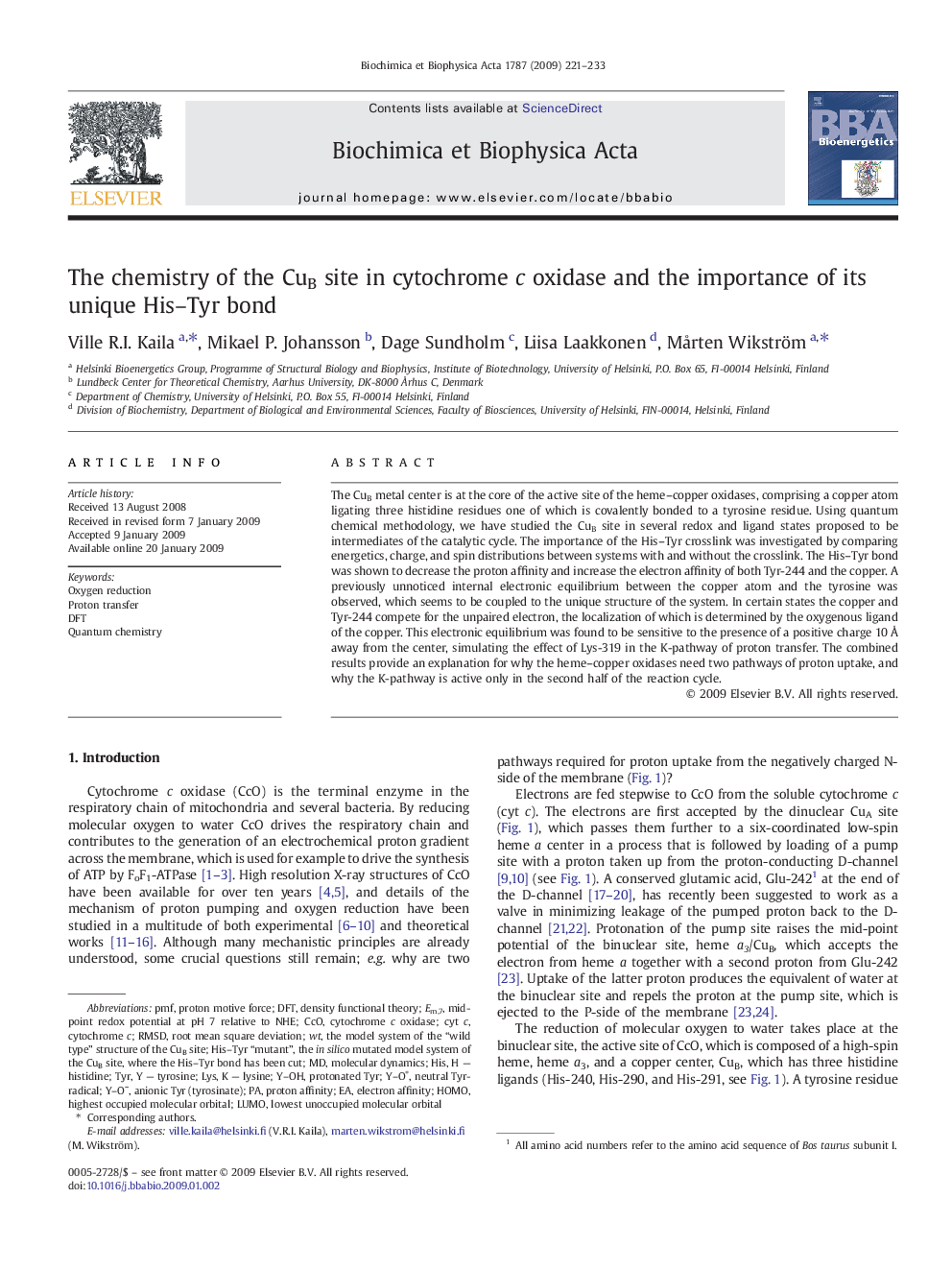| کد مقاله | کد نشریه | سال انتشار | مقاله انگلیسی | نسخه تمام متن |
|---|---|---|---|---|
| 1943176 | 1052651 | 2009 | 13 صفحه PDF | دانلود رایگان |

The CuB metal center is at the core of the active site of the heme–copper oxidases, comprising a copper atom ligating three histidine residues one of which is covalently bonded to a tyrosine residue. Using quantum chemical methodology, we have studied the CuB site in several redox and ligand states proposed to be intermediates of the catalytic cycle. The importance of the His–Tyr crosslink was investigated by comparing energetics, charge, and spin distributions between systems with and without the crosslink. The His–Tyr bond was shown to decrease the proton affinity and increase the electron affinity of both Tyr-244 and the copper. A previously unnoticed internal electronic equilibrium between the copper atom and the tyrosine was observed, which seems to be coupled to the unique structure of the system. In certain states the copper and Tyr-244 compete for the unpaired electron, the localization of which is determined by the oxygenous ligand of the copper. This electronic equilibrium was found to be sensitive to the presence of a positive charge 10 Å away from the center, simulating the effect of Lys-319 in the K-pathway of proton transfer. The combined results provide an explanation for why the heme–copper oxidases need two pathways of proton uptake, and why the K-pathway is active only in the second half of the reaction cycle.
Journal: Biochimica et Biophysica Acta (BBA) - Bioenergetics - Volume 1787, Issue 4, April 2009, Pages 221–233